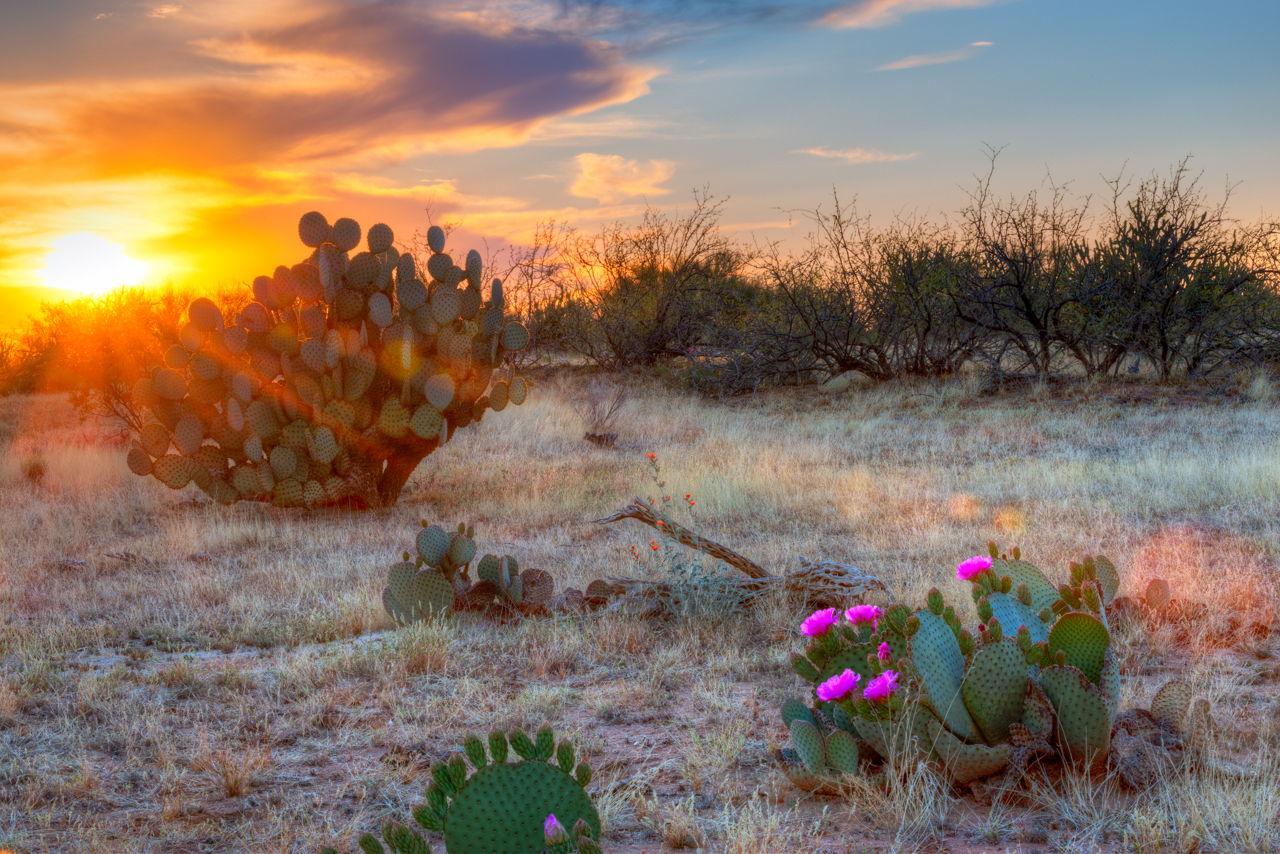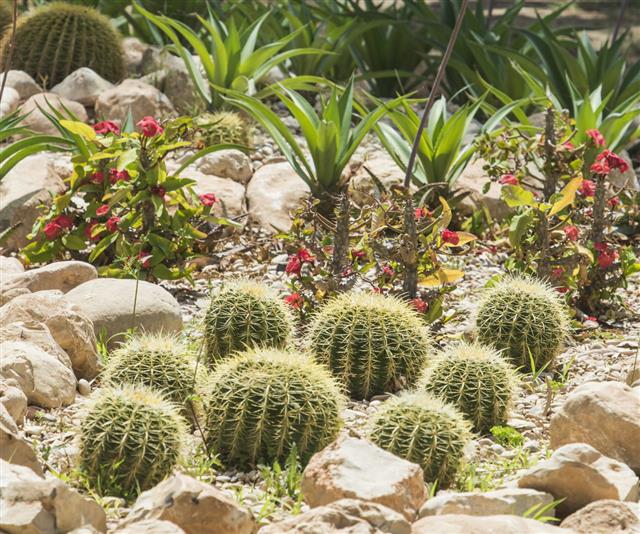
Interested to know what are the plants found in the Sonoran desert? Read on for some interesting facts about the diverse flora on this North American desert.
Located in the south-western parts of North America, the Sonoran desert includes parts of Arizona and California in the U.S., and Sonora in Mexico. A unique feature of this desert is that it experiences more rainfall than most deserts.
During the hot, dry weather, sand storms alter the face of the desert by shifting the sand dunes. Flowers can be found in this desert if there is enough rain during the summer months. The snow-covered peaks of the Mount Catalina are a beautiful sight in winter.
The Sonoran desert has unique species of plants and animals, owing to its distinct climate. Some of the species of plants found in this desert, include tumble weed, fairy duster, devils claw and ghost flower. Here you’ll find information about the singular plant species found in this desert, some startling facts about them and more.
Plants Found in the Sonoran Desert
Barrel Cactus
One of the tallest cacti on the planet, the barrel-shaped cacti is different from other cacti because of its average height of 8 feet.
It has straight parallel ridges running along its sides and these ridges are covered with sharp, pointed spines. The Native Americans boiled the pulp of the barrel cactus for food and used the hook like spines for fishing. This is a beautiful cacti with red or yellow flowers.
Brittle Bush
It is a small plant which grows to a height of 2 to 5 feet. The branches of this plant are brittle and the leaves are broad at the base and narrow at the tip. The thick mat of hair on the leaves, prevents excessive loss of water and protects the plant from heat and cold.
This plant belongs to the sunflower family and has small yellow flowers that appear during the summer months. The secretions from the stem of this plant, is used as adhesive and has analgesic properties. This plant grows abundantly in many parts of the desert.
Desert Ironwood
This species is found growing on lower altitudes, mostly below 2500 foot above sea level. Belonging to the pea family, this plant is one of the tallest in the Sonoran desert, growing up to a height of 20 to 25 feet. The dense green canopy of the desert ironwood serves as a suitable habitat for a variety of bird and insect species.
Not only this, many animals of the Sonoran desert survive on the leaves of this plant. The desert ironwood flowers during the summer months, when clusters of small flowers appear on the branches. The wood of the desert ironwood is used for making charcoal.
Chain Fruit Cholla
The chain fruit cholla is a cactus with segmented branches that appear like chains. The branches are covered with a thick growth of spines, which protect the plant from the heat.
This plant is also called the “jumping cholla” because the segments get detached from the plant easily and attach themselves to the passing animals. This is the main method of propagation of the plant, which is adapted to grow in the most hostile desert conditions.
Velvet Mesquite
Similar to the desert ironwood, the velvet mesquite also has a canopy that shelters insects and many species of bird life. It predominantly grows around streams and water bodies in the desert. The largest of the mesquite species, it has thorny branches that spread out in all directions.
The dark green leaves grow alternately on the branches and are covered with fine hair. Many small animals feed on the velvet mesquite, which used to be the staple food of the Native Americans. Today, it is used as firewood and for making charcoal.
Hedgehog Cactus
The hedgehog cactus grows in clusters, having a cylindrical stem that has spines instead of leaves. It has attractive, bright red cup-shaped flowers that appear during the summer months.
The fruits are edible and are red in color. Found only in parts of America, the pulp of this plant was used by the natives to prepare sweet cakes.
Saguaro Cactus
The Saguaro cactus is a species of cacti found in the Sonoran desert. It bears white flowers during summer, which remain closed during the day and open when the temperature drops at night.
The fleshy stem of the Saguaro cactus helps retain water absorbed during the rains, which is then used by the plant to survive the long dry spells. Many animals, including mice and bats, feed on the stem of the Saguaro cactus. To protect this species of cacti, which is the state flower of Arizona, there is a national park named Saguaro National Park.
Soaptree Yucca
It is one of the most strikingly unusual trees dotting the landscape of the Sonoran desert. Growing to an average height of 15 feet, the soaptree yucca is called so because the trunk and roots contain a substance that was used as a soap by the natives.
The leaves of this ornamental plant are triangular in shape and resemble those of a palm tree. The plant fibers are used for weaving baskets and other items.
Teddybear Cholla
At first glance, the short fuzzy branches growing from the tip of this plant make it appear like a cute teddy bear with protruding arms. However, just have a closer look and you’ll know what it really is!
The teddybear cholla is completely covered with a mat of spines which get attached to you if you happen to brush against them. The plant bears yellow flowers during summer, which yield spiny fruits. The teddybear cholla is one of the many plants that have adapted to a life in the deserts.
The thick growth of spines protects the plant from the extreme temperatures and the green stems contain chlorophyll necessary for photosynthesis. These plants can be found all over the Sonoran desert, up to an height of 2000 feet.
You can see that the Sonoran desert has some of the most exotic plant species on planet earth. Do you love the thrill of exploring fascinating places? There you go! So now you know where to head to, on your next adventure trip.



